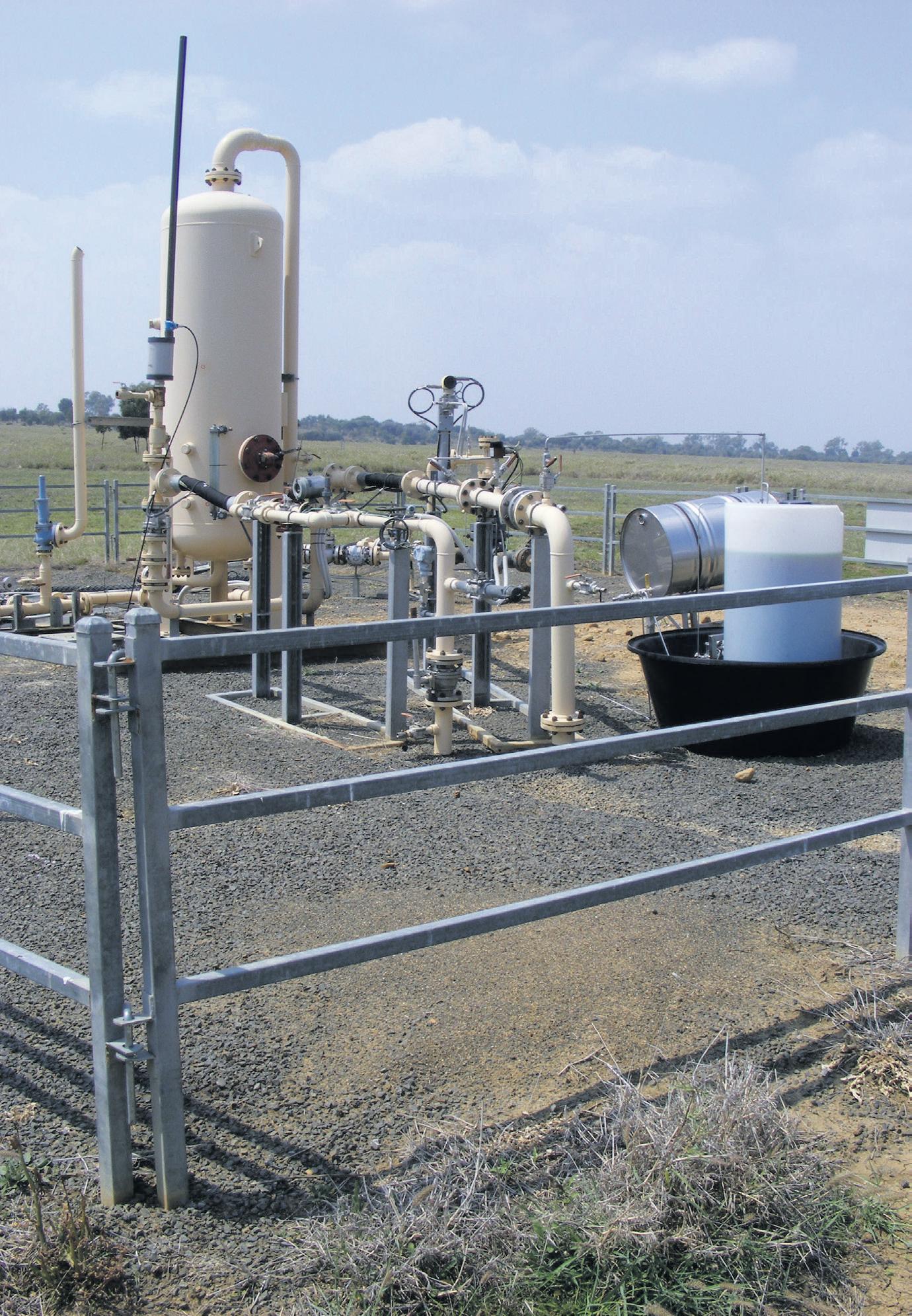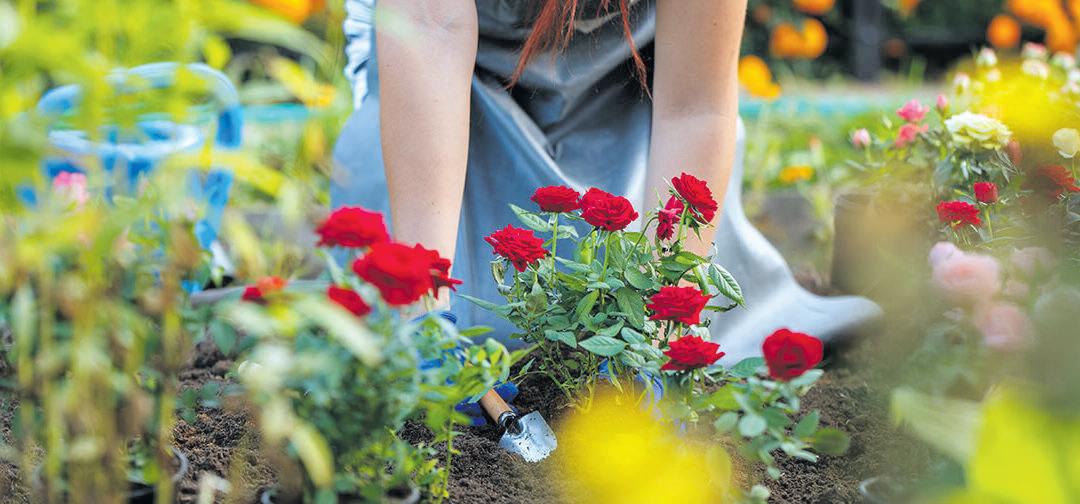
4 minute read
CSIRO Examines Coal Seam Gas Activity’s Effect on Human Health
By JEFFREY GIBBS
Coal Seam Gas (CSG) activities have long been a controversial topic in Queensland. With a new study released into the potential for CSG activities to affect human health, CSIRO and The University of Queensland have teamed up to examine the issue in closer detail. The research, which was funded primarily by the Queensland and Federal Governments and CSIRO, focused on a 2,150 square kilometre study site in the Surat Basin.
Factors that may lead to potential hazards, such as chemicals, air emissions, noise, light and dust associated with CSG activities were identifed and appraised. Existing data related to these factors was screened to determine whether any factors would require in-depth assessment. The study found that while the majority of factors posed no risk to human health, a small number of identifed factors required further in-depth assessment.

To respond to this, two new CSIRO research projects have been launched, focussing on eight groups of chemical factors. The project was governed by CSIRO’s Gas Industry Social and Environmental Research Alliance (GISERA), an alliance led by CSIRO and a collaboration between CSIRO, commonwealth, state and territory governments and industry with the purpose of working with the community to undertake research about the potential or actual impacts of gas development, across major environmental and socio-economic topics.
The study’s fndings were welcomed by Dr Damian Barrett, CSIRO Energy Resources Research Director and GISERA Director. He said that the study provided detailed information about the potential hazards to affect human health from CSG activities in the Surat Basin. “The value of this exhaustive study is that it provides certainty about where we need to focus further research,” Dr Barrett said. “By ruling out factors of no concern we ensure cost-effective and targeted use of research resources to zero in on chemical factors with a possible pathway for potential impact on human health.”
Your local family - owned
The study examined all activities relating to coal seam gas operations in the study site, including over 2,400 wells, 5,000km of gathering lines, four water treatment plants, eight gas processing plants, and 15 compression stations. Researchers identifed ‘factors’ associated with CSG activities and appraised them for their hazard potential to human health. The university’s Queensland Alliance for Environmental Health Science (QAEHS) appraised the chemical factors used by industry, while CSIRO completed the assessment of chemical factors associated with air emissions and physical factors (noise, light and dust).

Data was supplied by Australia Pacifc LNG’s upstream operator Origin, and

Shell’s operator QGC, as well as Queensland Government data sets. The project was also subject to additional governance and ethics controls, and was supported by local regional stakeholder and technical reference groups. The health study design was based on a framework developed by CSIRO in a previous related GISERA health project. The study found that noise and light emissions from CSG activities did not pose a hazard to physical health in the study site, and that chemical factors associated with air emissions from CSG activities were within relevant health-based air quality objectives. Of the 97 unique chemical factors used in CSG drilling and hydraulic fracturing operations, 72 were assessed and found to have low hazard potential to human health at the study site. The remaining 25 chemical factors (in eight groups) warranted further in-depth assessment.
CSIRO also conducted an extension study which examined the microbial degradation of these groups of chemical factors in soil and aquifer samples. To respond to the fndings, two new CSIRO research projects have been launched, focussing on the eight identifed groups of chemical factors. The frst project will examine the seven chemical groups that have a potential pathway to affect human health via soils and groundwater, while the second will focus on the eighth chemical factor, silica dust, which has a potential airborne pathway to affect human health. Both research projects will involve comprehensive feld sampling campaigns. In conclusion, the study has provided an important insight into the potential for CSG activities to affect human health in Queensland, and has identifed areas for further research. With two new CSIRO research projects underway, we can hope to gain a better understanding of the potential risks associated with CSG activities, and ensure that appropriate safety measures are in place for the beneft of the local community.
Roses are one of the most popular fowers in the world and many gardeners enjoy growing them. However, it can be a challenge to take care of roses in winter, especially in Australia. This season brings cooler temperatures, shorter days, and unpredictable weather, which can all affect your roses. Luckily, there are some simple tips and techniques that can help you to keep your roses looking beautiful and healthy throughout the winter months. The frst step when caring for roses in winter is to make sure that you water them adequately.
Roses need more water during the winter than in other seasons, as the cooler temperatures mean that the soil will dry out faster. It is essential to water your roses regularly, especially during periods of extended dryness. Make sure to check the soil around the roses to ensure that it is moist, as roses can become dehydrated if not watered frequently enough. When it comes to fertilising, you should not use the same fertilisers that you use during the warmer months.

Rose fertilisers usually contain high levels of nitrogen, which can burn the roots of the plants when temperatures are cold. Instead, look for a slow-release fertiliser that is specifcally designed for winter use. This type of fertiliser will release its nutrients gradually over time, ensuring that your roses stay healthy and vibrant. During the winter months, you should also be diligent about pruning your roses. Pruning is an important part of caring for roses, as it helps to maintain their shape and encourage new growth.

It is best to wait until after the frst frost of the season before you prune your roses, as this will help to protect them from the cold. When pruning, make sure to remove any diseased or dead branches and cut away any shoots that are growing in an undesirable direction.
In addition to the steps outlined above, it is also important to protect your roses from the cold. If you live in an area with very cold winters, you may need to provide your roses with extra protection. There are a few different methods that can be used, such as using a cloche or covering the roses with mulch or straw. These methods will help to keep the roses warmer and protect them from the elements. By following these simple tips and techniques, you can ensure that your roses stay healthy and beautiful during the winter months. With a little extra care and attention, your roses will be sure to thrive in the colder weather.
So, if you live in Australia and want to keep your roses looking their best throughout the winter, be sure to follow these tips and take the necessary steps to keep them healthy and vibrant.










